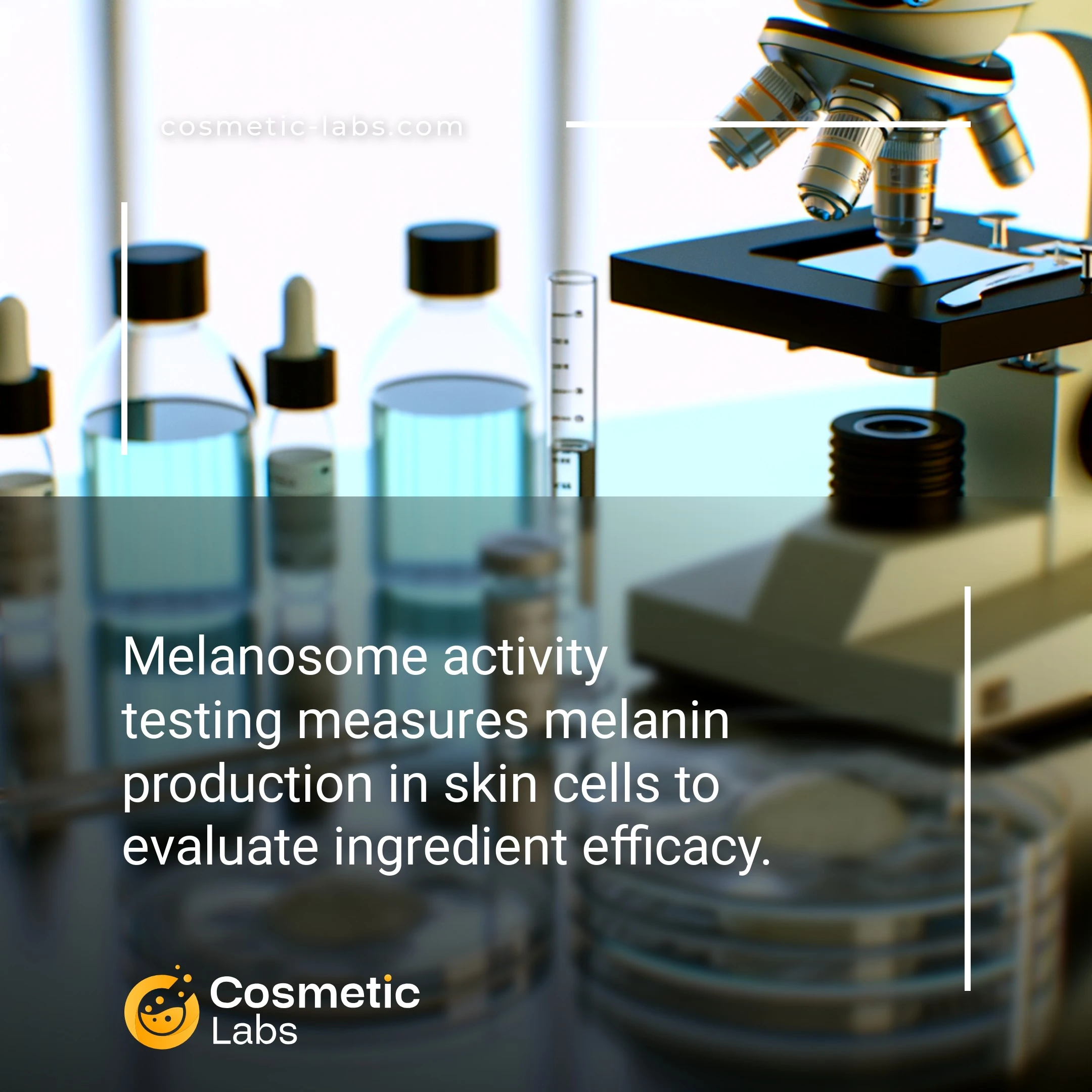Melanosome Activity Testing Services for Beauty Brands

What is Melanosome activity testing?
Melanosome activity testing services measure how cosmetic ingredients affect melanin production and distribution within skin cells. Labs use specialized assays to track melanosome transfer from melanocytes to keratinocytes, providing quantitative data on skin lightening or darkening effects. This cellular-level analysis helps brands validate whitening claims and optimize pigmentation formulas before clinical trials, with results typically available within 2-3 weeks.
Why do you need this service?
Cosmetic labs use melanosome activity testing to validate skin brightening claims for whitening serums, dark spot correctors, and anti-aging formulations before market launch. Brands rely on these assays to measure melanin synthesis inhibition rates and secure regulatory approval with documented efficacy data that supports product positioning and marketing claims.
Who provides Melanosome activity testing services?
All cosmetic labs providing Melanosome activity testing services
There is no company providing these services at the moment.
Melanosome Activity Testing Services
Melanosome activity testing measures how your whitening and brightening ingredients interact with melanin-producing organelles in skin cells. This specialized pigmentation testing helps validate your product claims before market launch and supports regulatory submissions for skin-lightening cosmetics.
In Vitro Melanosome Transfer Analysis
Labs use co-culture systems to track how melanosomes move between melanocytes and keratinocytes. This process reveals whether your active ingredients block or enhance pigment transfer – the key mechanism behind skin tone changes.
Testing protocols typically include:
- Fluorescent melanosome tracking over 24-72 hours
- Dose-response curves for ingredient concentration
- Comparative analysis against reference compounds
- Statistical validation with multiple cell donors
Results show exactly how your formulation affects pigment distribution at the cellular level, giving you concrete data for product positioning.
Melanin Synthesis Inhibition Studies
These assays measure tyrosinase activity and melanin production in cultured melanocytes treated with your ingredients. Labs quantify both immediate enzyme inhibition and long-term melanin reduction effects.
Standard testing includes:
- Tyrosinase enzyme activity measurement
- Total melanin content analysis
- Cell viability assessment
- Time-course studies up to 7 days
This data directly supports skin brightening claims and helps optimize ingredient concentrations for maximum efficacy without cytotoxicity. Connect with specialized labs on our platform to discuss your specific melanosome testing requirements.
Practical Applications of Melanosome Activity Testing Services
Cosmetic labs use melanosome activity testing services to validate ingredient efficacy and support product claims across diverse skin lightening and pigmentation control formulations.
Skin Lightening Product Development
Beauty brands rely on melanosome transfer assays to evaluate active ingredients like kojic acid, arbutin, and vitamin C derivatives. Labs measure melanin synthesis inhibition rates through tyrosinase activity protocols and cellular uptake studies. These tests generate quantifiable data showing percentage reduction in melanin production within 24-72 hour timeframes.
Product developers use this data to optimize concentrations, compare ingredient performance, and establish dosage guidelines. The results directly support marketing claims about brightening efficacy and help brands differentiate their formulations in competitive markets.
| Testing Method | Measurement Focus | Typical Timeline | Key Output |
|---|---|---|---|
| Tyrosinase Activity Assay | Enzyme inhibition | 24-48 hours | IC50 values |
| Melanin Content Analysis | Pigment production | 72 hours | Percentage reduction |
| Melanosome Transfer Studies | Cellular transport | 5-7 days | Transfer efficiency rates |
Anti-Aging and Hyperpigmentation Solutions
Cosmetic labs conduct melanosome distribution analysis for anti-aging products targeting age spots and melasma. Testing protocols evaluate how ingredients affect melanosome clustering and distribution patterns within keratinocytes. Labs use fluorescence microscopy and flow cytometry to track cellular-level changes in pigmentation pathways.
This testing proves particularly valuable for combination products containing retinoids, peptides, and botanical extracts. Brands receive detailed reports showing before-and-after cellular images and statistical analysis of pigmentation uniformity improvements.
Ready to validate your pigmentation control ingredients? Contact specialized labs on our platform to discuss melanosome activity testing protocols tailored to your product development needs.
